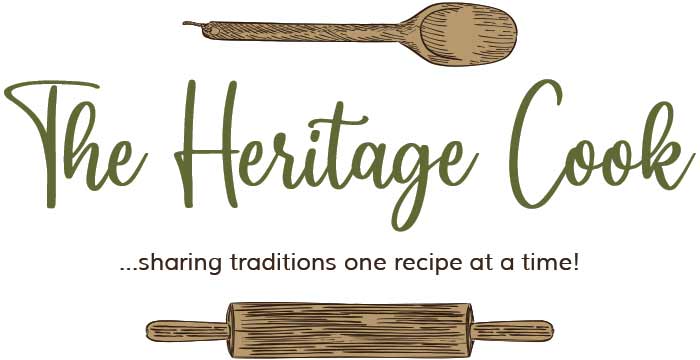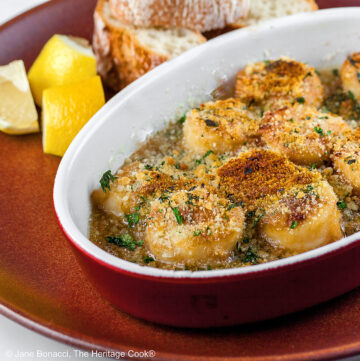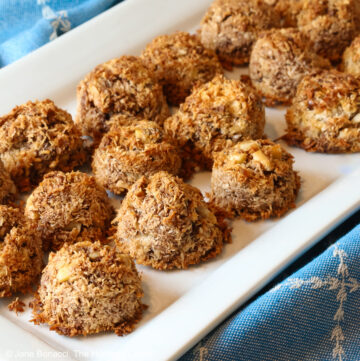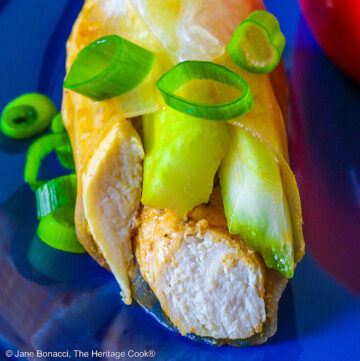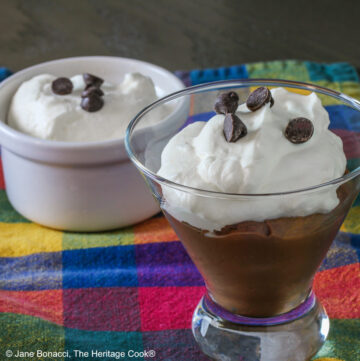When you are first diagnosed with celiac or gluten-intolerance and transition to gluten-free baking and cooking, it is easiest to use a commercially available blend such as those from King Arthur Flour, Bob’s Red Mill, Gluten Free Pantry, Cup4Cup, or Authentic Foods. They are designed to be swapped 1 for 1 for the all-purpose flour in any regular recipe.
My personal favorite blends are the two I developed for our book, “The Gluten-Free Bread Machine Cookbook“. I use them interchangeably for all my GF baking projects and whenever a recipe calls for flour, everything from cookies and cakes to breads and biscuits.If you are converting a recipe to gluten-free, use 120 grams of the flour blend for each 1 cup flour called for in the recipe plus 1/4 tsp xanthan gum or 1/2 tsp psyllium husk powder. If you are making bread, we recommend using about 1 tsp xanthan (or 2 tsp psyllium) for tender bread that doesn’t fall apart.
These flour blend recipes can easily be halved or doubled and are easy to put together and store in a tightly sealed container like this one from Cambro. Be sure to order a cover too. This container is commercial-grade and will last for years.
Light Flour Blend
… perfect for recipes where you want other flavors to shine
Yield: 800 grams, 1.7 lb / 28 oz
- 280 g (2 cups + 4-3/4 tsp) white rice flour or brown rice flour, preferably from Authentic Foods
- 280 g (2 cups + 2 tbsp) sweet rice flour (not the same as white rice flour), preferably from Authentic Foods
- 120 g (1 cup + 4-3/4 tsp) tapioca flour/starch
- 120 g (1/2 cup + 3 tbsp + 2-1/4 tsp) potato starch (not potato flour)
Whole-Grain Flour Blend
… a good option if you want more fiber in your diet
Yield: 800 grams, 1.7 lb / 28 oz
- 200 g (1-3/4 cups + 1/4 tsp) millet flour
- 200 g (1-1/2 cups + 3/4 tsp) sweet rice flour (not white rice flour), preferably from Authentic Foods
- 160 g (1-1/3 cups + 2-1/2 tsp) sorghum flour or brown rice flour, preferably from Authentic Foods
- 120 g (1 cup +4-3/4 tsp) tapioca flour/starch
- 120 g (1/2 cup + 3 tbsp + 2-1/4 tsp) potato starch (not potato flour)
Directions: Weigh each ingredient with a kitchen scale and pour into a large bowl. Whisk until fully incorporated and transfer to a large food-safe plastic bin, such as the Cambro listed above. Secure the lid on the container and shake vigorously to evenly distribute all the ingredients. Gluten-free flours tend to settle and sometimes separate while sitting, so always shake the container well before measuring for each baking project.
Once you are more comfortable with gluten-free baking and the various flours available to work with, you can use these charts to concoct your own special blends. This is where you can stretch your creativity and customize the flours to create the flavors and textures you want.
How to Build a Gluten-Free Flour Blend
From Gluten-Free Makeovers by Beth Hillson
To use this chart, find the flour in your blend recipe you wish to change and replace it with another one from the same list. The properties, while not identical, will be similar and serve the same function in building the structure in a particular recipe.
|
Neutral (light) Flours |
High Protein Flours |
High Fiber Flours |
Stabilizers – Adds texture / moisture |
Starches |
Gums |
| Brown Rice Flour | Almond Flour | Almond Flour | Coconut Flour * | Arrowroot Flour | Agar Powder |
| Corn Flour | Amaranth Flour | Amaranth Flour | Expandex | Cornstarch | Carrageenan |
| Sorghum Flour | Bean Flours | Bean Flours | Flax Seed Meal | Kuzu Starch | Gelatin Powder |
| Sweet Rice Flour | Buckwheat Flour | Buckwheat Flour | Oat Bran | Potato Starch | Guar Gum |
| White Rice Flour | Chickpea Flour | Chickpea Flour | Potato Flour | Sweet Potato Flour | Locust Bean Gum |
| Millet Flour | Corn Flour | Rice Bran | Tapioca Starch | Xanthan Gum | |
| Montina Flour | Mesquite Flour | ||||
| Oat Flour | Montina Flour | ||||
| Quinoa Flour | Soy Flour | * Coconut flour | |||
| Sorghum Flour | actually absorbs | ||||
| Soy Flour | liquids in baked | ||||
| Teff Flour | goods. |
Individual Flour Characteristics
Learn about the flavor and characteristics of different types of flour and how much to use if you are substituting some in your baking projects.
From Gluten-Free Makeovers by Beth Hillson
|
Flour |
Flavor |
Percentage to Use |
Contents |
Storage |
| Almond Flour | Sweet, nutty | High in protein, fiber, fat | Refrigerated or frozen | |
| Amaranth | Mildly nutty | 20 to 25% in baking | High in protein, nutrients | |
| Buckwheat | Robust flavor, use with other flours | Up to 1 cup per recipe; less in subtle recipes | High in protein, fiber,
B-Vitamins |
|
| Chestnut Flour | Nutty, earthy | Up to 25% total flour | Low in protein, fiber | Refrigerated or frozen |
| Coconut Flour | Subtle, sweet, coconut | Up to 15% in baked goods | Low-Carb, high-fiber | |
| Corn Flour | Finely ground corn | Use in breads, cakes, etc. | ||
| Cornmeal | Coarsely ground corn | Use in cornbread, breading, polenta | ||
| Cornstarch | Fine white powder | Lightens texture; thickens sauces | ||
| Expandex | Modified tapioca/starch | If used in place of tapioca, reduce amt of Expandex by 1 to 2 tbsp & gum by 1/2 to 1 tsp | ||
| Flax Seed/Meal | Only use ground not whole | Use 2 to 3 tbsp per recipe | High in fiber, Omega-3’s | Refrigerated or frozen |
| Legume (Bean) Flours | Can be strongly flavored; best in savory foods | No more than 25% per recipe; Quinoa flour is a good substitute | Best when used with brown sugar, molasses, chocolate, spices | |
| Mesquite Flour | Pleasantly sweet | Up to 25% per recipe | Best in pancakes, brownies & gingerbread | |
| Millet | Mild, sweet, nutty, distinctive flavor | No more than 25% in any flour blend | Nutrient rich, high-protein, high-fiber | |
| Montina | Wheat-like flavor | Up to 30% in flour blend | High protein, fiber | |
| Oats/Oat Flour | Use only GF oats | Add taste, texture, and structure | ||
| Potato Flour | Replaces xanthan or guar | Add 2 to 4 tbsp per recipe; reduce or eliminate gums | High in fiber, protein | Good for soft, chewy mouthfeel |
| Potato Starch | Use 1:1 with cornstarch | Best when used with eggs | Whisk before using | |
| Quinoa Flour | Delicate, nutty flavor similar to wild rice | Use up to 30% of flour blend | Complete protein | |
| Rice Flour | Varies from fine to medium to coarse textures | Best when blended with other flours | Brown is higher fiber, nutrients | |
| Sorghum Flour | Slightly sweet taste | Use no more than 30% in any flour blend | High in fiber, protein | |
| Teff Flour, preferably light | Mild nutty flavor | High in calcium, protein, and fiber | Combined with Montina, tastes like whole wheat | |
| Tapioca Starch | Good in breads, tortillas, and pasta | |||
| Arrowroot Starch | Pleasant tasting/versatile | Good for breads & bagels | ||
| Sweet Potato Starch | Yellow-orange hue in final baked goods | Best in recipes containing chocolate, molasses and spices |
Custom Flour Blends
Sample blends you can use for specific projects or substitutions.
From Gluten-Free Makeovers by Beth Hillson
|
Ingredient |
Basic Blend |
Cake & Pastry Flour |
Self-Rising Flour |
Bread Flour #1 All-Purpose Breads |
Bread Flour #2 Hi-Protein Breads |
| Rice Flour | 2-3/4 cups (15.4 oz) | 1 cup white rice flour (5.4 oz) | 1-1/4 cups white rice flour (6.5 oz) | 1-1/4 cups white (6.5 oz) or 5.5 oz brown | 2 cups brown rice flour (8.5 oz) |
| Bean Flours | 2-1/4 cups chickpea (9.5 oz), quinoa flour (9.1 oz), or other bean flour | ||||
| Corn or Potato Starch | 1-1/4 cups (8 oz) | 3/4 cup (3.5 oz) | 3/4 cup cornstarch (3.5 oz) or 4 oz potato starch | 3/4 cup cornstarch (3.5 oz) or tapioca starch (3.2 oz) | 2 cups cornstarch (9.6 oz) or potato starch (11.2 oz) |
| Tapioca Starch/Flour | 1/3 cup (1.5 oz) | 1/4 cup (1.1 oz) | 2 cups + 2 tbsp
(9.3 oz) |
||
| Amaranth Flour | 3/4 cup (3 oz) | 1/2 cup (2 oz) | |||
| Sweet White Sorghum Flour | 1 cup (4 oz) | 1 cup (4 oz) | 1-1/4 cups (5.25 oz) | ||
| Xanthan or Guar Gum | 1-1/2 tsp | 2 tsp Xanthan | 3 tsp Xanthan | 2 tbsp + 2 tsp Xanthan | |
| Salt | 1/2 tsp | 1-1/2 tsp | 1 tsp | 3 tsp | |
| Baking Powder | 2 tbsp | ||||
| Light Brown Sugar | 1/2 cup packed (2.8 oz) |
Comparative Measurements of Gluten-Free Flours
From Suite 101.com
For every 1 cup of regular all-purpose flour in recipes, you can substitute:
- Amaranth = 1 cup
- Bean Flour = 1 cup
- Corn Flour = 1 cup
- Cornmeal = 3/4 cup
- Millet Flour = 1 cup
- Finely Ground Nuts = 1/2 cup
- Oat Flour = 1-1/3 cups
- Potato Flour = 5/8 cup
- Potato Starch = 3/4 cup
- Quinoa Flour = 1 cup
- White or Brown Rice Flour = 7/8 cup
- Sorghum Flour = 1 cup
- Soy Flour = 3/4 cup
- Sweet Rice Flour = 7/8 cup
- Tapioca Flour/Starch = 1 cup
- Teff Flour = 7/8 cup
Note: When using almond or hazelnut meal/flour, always combine it with a GF-AP blend. For 2-1/2 cups wheat flour in a recipe, substitute 1/2 cup almond or hazelnut meal for one of the cups and 1-1/2 cups GF-AP flour for the remaining flour. Almond flour is particularly good in pie crusts, pastries, cookies and sweet breads.
